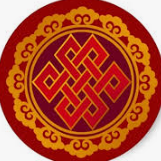Mild BPH symptoms, unclear treatment path — anyone in a similar situation?
-
Recently Browsing 2 members
-
Topics
-
Popular Contributors
-
Latest posts...
-
35
Motorbike for a 16 year old?
My GF's 15yr old, just took training and testing to ride a motorbike in Pattaya. Seems like it was a good course as he passsed the DLT test and obtained his 2 year licence. He's a quiet, sensible lad but I do worry about others on the road. If you as OP @Ronkworth can arrange some safety training course then that's valuable. I remember so well the motorcyle safety training I did in the UK in 1983 - it was of benefit in road skills which apply as a 4 wheel driver too. -
34
Report British Woman Arrested at Heathrow for Cannabis Smuggling
It's quite likely they didn't - you think that stop at Heathrow was random? -
103
Trump to Canada: “It will cost you $61 billion, but zero if you become 51st state”
Who needs Canada? Trump will annex Greenland. And reactivate the old secret nukular base under the ice. -
78
Western Allies Warn Israel Over Gaza Offensive as Fragile Talks Resume in Doha
Where and when did they use the white phosphorous on refugee camps to burn people alive? Neither HRW nor Amnesty International are offering that claim now. -
78
Western Allies Warn Israel Over Gaza Offensive as Fragile Talks Resume in Doha
The estimated 50,000 dead are not innocent victims. Many were active combatants. Tens of thousands. were members of Islamic Jihad, Hamas and other military wings. They identify as combat personnel. Others were support and logistics workers. Who do you think was transporting Hamas munitions and weaponry. Others were command and control workers. Others were intentionally put in harm's way to act as human shields and their death was welcomed as a tool to be used in the propaganda war. Some were not supporters of Hamas or other militants. These groups used the war as an opportunity to get rid of political opponents. Sometimes the smugglers and black marjeters rubbed someone the wrong way and were killed, their number being added to the death toll. And some were innocent non combatants. It is telling that you consider the violent m armed military personnel who declared war on israel as being "victims". -
24
Anyone bought a (decent) office chair from Lazada?
Does IKEA ship everywhere in Thailand?
-
-
Popular in The Pub
-


.thumb.jpg.3ee24d9400fb02605ea21bc13b1bf901.jpg)








Recommended Posts
Create an account or sign in to comment
You need to be a member in order to leave a comment
Create an account
Sign up for a new account in our community. It's easy!
Register a new accountSign in
Already have an account? Sign in here.
Sign In Now